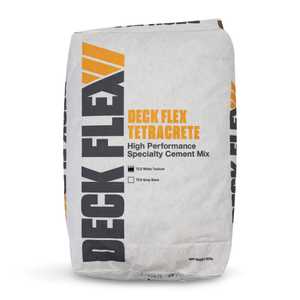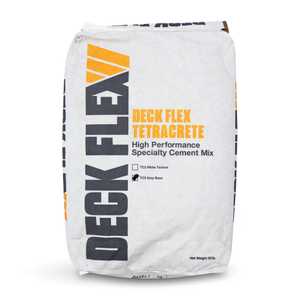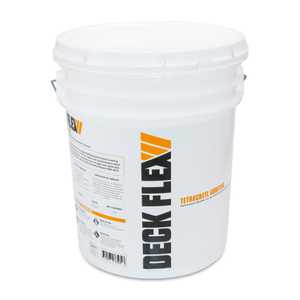AC39 - Walking Deck Waterproofing Systems
ICC-ES Acceptance Criteria for Walking Deck Systems and Coatings
Last updated: October 25, 2025
Overview
ICC-ES AC39 is an acceptance criteria document establishing standardized guidelines for walking deck systems used over various substrates. It applies to products using cementitious coatings, elastomeric coatings, membrane systems, or other components applied over new or existing substrates to create durable, waterproof walking surfaces.
AC39 evaluation verifies that independent third parties have confirmed products meet specific performance standards and building code requirements. Products that successfully pass evaluation receive ICC-ES Evaluation Service Reports (ESRs), which provide nationwide acceptance by building officials.
Scope & Application
The criteria applies to walking deck waterproofing systems regardless of substrate type, including plywood, concrete, steel, and other structural materials. The evaluation encompasses complete system performance, not just individual components.
CSI MasterFormat Classification
ICC-ES AC39 evaluated walking deck systems are typically specified under:
- Division 07 00 00: Thermal and Moisture Protection
- Section 07 18 13: Pedestrian Traffic Coatings
This classification helps architects and specifiers locate appropriate waterproofing systems when writing project specifications. Products evaluated under AC39 provide both waterproofing (moisture protection) and durable walking surfaces (traffic coatings) in a single system.
ICC-ES AC39 is often used alongside AC75 (Membrane Roof Coverings) for systems that serve dual purposes as both waterproofing and walking surfaces.
Key Requirements
ICC-ES AC39 evaluation encompasses nine primary performance areas that walking deck systems must satisfy:
- Materials & System ComponentsIdentifies acceptable coatings, reinforcement, substrates, and adhesives as complete integrated systems.
- Structural PerformanceVerifies the deck surface maintains integrity under normal pedestrian loads without cracking, delamination, or deterioration.
- Fire ResistanceTesting per ASTM E84 determines flame spread and smoke development, with products achieving Class A or Class B ratings.
- Impact ResistanceConfirms the system withstands impact from typical use without damage or waterproofing failure.
- Wind ResistanceRoof deck applications undergo uplift testing with ratings for specific wind speeds based on building height and location.
- Wear Resistance & DurabilityAbrasion resistance testing ensures surfaces withstand foot traffic without excessive deterioration.
- Water ResistanceVerification that systems prevent water penetration and protect substrates from moisture damage.
- Slip ResistanceCoefficient of friction evaluation ensures adequate pedestrian safety on wet and dry surfaces.
- Installation RequirementsSpecifies surface preparation, application methods, curing requirements, and quality control procedures.
Testing & Evaluation Process
Products seeking ICC-ES AC39 approval follow a comprehensive five step evaluation pathway:
- Application SubmissionManufacturer submits formal application with technical documentation, product specifications, and proposed uses.
- Laboratory TestingAccredited laboratories conduct testing per AC39 protocols, evaluating all performance requirements.
- Technical ReviewICC-ES engineers review test results, manufacturing processes, and quality control procedures.
- Report IssuanceUpon passing all requirements, an Evaluation Service Report (ESR) is issued with specific limitations and installation requirements.
- Ongoing SurveillanceContinuous compliance monitoring includes periodic facility inspections, quality assurance audits, and retesting as needed.
Testing Standards Referenced in ICC-ES AC39
ICC-ES AC39 evaluation uses these test methods:
- ASTM E84 for fire spread and smoke development
- Wind uplift testing based on building height and location
- Abrasion resistance using simulated foot traffic wear
- Water penetration to ensure waterproofing holds up
- Impact resistance with dropped object testing
You don't need to know the details of these tests. Just know that ICC-ES AC39 evaluated systems have been through them.
When ICC-ES AC39 is Required
Common situations requiring ICC-ES AC39:
- Multi-family buildings with exterior balconies or decks
- Apartment or condo balcony repairs or replacements
- New construction with pedestrian walking surfaces over occupied space
- California properties subject to SB721 balcony inspections
- Rooftop decks that people walk on
- Pool decks in commercial or multi-family buildings
- Any deck waterproofing project requiring a building permit
Not every project needs ICC-ES AC39. Small residential work might not require it. But if you're doing multi-family, commercial, or pulling permits for waterproofing work, expect inspectors to ask for it.
Compliance Considerations
ESR Documentation
Products must have current ICC Evaluation Service Reports (ESRs). ESRs are renewable documents that must be maintained annually. Always verify that the ESR is current before specifying or installing a walking deck system.
Installation Compliance
Systems must be installed exactly as specified in the evaluation report. Deviations from approved installation procedures, substrate preparations, or component substitutions void the evaluation and may result in code compliance failures.
Code Alignment
ICC-ES AC39 evaluated products demonstrate compliance with current editions of the International Building Code (IBC) and International Residential Code (IRC). Review the specific ESR to confirm which code editions are covered.
Common Questions
Do I need ICC-ES AC39 for every balcony project?
Not always. If you're pulling a permit for balcony waterproofing or deck construction, most building departments want to see an ICC-ES AC39 evaluated system. California SB721 inspections often require it. Check with your local building department.
Can I use just the coating without the rest of the system?
No. The ICC-ES AC39 evaluation covers the complete system: base layer, membrane, coating, everything. Using only part of the system voids the approval.
How do I prove a system is AC39 compliant during inspection?
You need the manufacturer's ICC-ES ESR number. Inspectors will check that the ESR is current and that you're using all the components listed in it.
What's the difference between ICC-ES AC39 and just "waterproof coating"?
ICC-ES AC39 means independent testing by ICC Evaluation Service verified the system works. Regular waterproof coatings might work fine, but they haven't been through the third party evaluation process that satisfies building codes.
Where do I find the ESR number?
It's on the product label or data sheet. You can also search the ICC Evaluation Service website by manufacturer or product name.
Is ICC-ES AC39 the same thing as SB721 compliance?
No. SB721 is a California law requiring balcony inspections. ICC-ES AC39 is one way to meet the code requirements that SB721 inspections check for. You can use ICC-ES AC39 evaluated systems for SB721 work, but SB721 is the inspection law, not the product standard.
Resources
Was this resource helpful?
Your feedback helps us improve our technical resources and guides.


